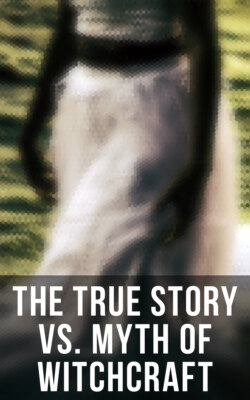Читать книгу The True Story vs. Myth of Witchcraft - William Godwin - Страница 223
На сайте Литреса книга снята с продажи.
NOTE.
ОглавлениеIn the curious ‘Apologia’ published by Dee, in 1595, in the form of a letter to the Archbishop of Canterbury, ‘containing a most briefe Discourse Apologeticall, with a plaine Demonstration and formal Protestation, for the lawfull, sincere, very faithfull and Christian course of the Philosophicall studies and exercises of a certaine studious Gentleman, an ancient Servant to her most excellent Maiesty Royall,’ he furnishes a list of ‘sundry Bookes and Treatises’ of which he was the author. The best known of his printed works is the ‘Monas Hieroglyphica, Mathematicè, Anagogicè que explicata’ (1564), dedicated to the Emperor Maximilian. Then there are ‘Propæ deumata Aphoristica;’ ‘The British Monarchy,’ otherwise called the ‘Petty Navy Royall: for the politique security, abundant wealth, and the triumphant state of this kingdom (with God’s favour) procuring’ (1576); and ‘Paralaticæ Commentationis, Praxcosque Nucleus quidam’ (1573). His unpublished manuscripts range over a wide field of astronomical, philosophical, and logical inquiry. The most important seem to be ‘The first great volume of famous and rich Discoveries,’ containing a good deal of speculation about Solomon and his Ophirian voyage; ‘Prester John, and the first great Cham;’ ‘The Brytish Complement of the perfect Art of Navigation;’ ‘The Art of Logicke, in English;’ and ‘De Hominis Corpore, Spiritu, et Anima: sive Microcosmicum totius Philosophiæ Naturalis Compendium.’
The character drawn of Dr. Dee by his learned biographer, Dr. Thomas Smith, by no means confirms the traditional notion of him as a crafty and credulous practiser in the Black Art. It is, on the contrary, the portrait of a just and upright man, grave in his demeanour, modest in his manners, abstemious in his habits; a man of studious disposition and benevolent temper; a man held in such high esteem by his neighbours that he was called upon to arbitrate when any differences arose between them; a fervent Christian, attentive to all the offices of the Church, and zealous in the defence of her faith.
Here is the original: ‘Si mores exterioremque vitæ cultum contemplemur, non quicquam ipsi in probrum et ignominium verti possit; ut pote sobrius, probus, affectibus sedatis, compositisque moribus, ab omni luxu et gulâ liber, justi et æqui studiosissimus, erga pauperes beneficus, vicinis facilis et benignus, quorum lites, atrisque partibus contendentium ad illum tanquam ad sapientum arbitrum appellantibus, moderari et desidere solebat: in publicis sacris cœtibus et in orationibus frequens, articulorum Christianæ fidei, in quibus omnes Orthodoxi conveniunt, strenuus assertor, zelo in hæreses, à primitiva Ecclesia damnatas, flagrans, inqui Peccōrum, qui virginitatem B. Mariæ ante partum Christi in dubium vocavit, accerimè invectus: licet de controversiis inter Romanenses et Reformatos circa reliqua doctrinæ capita non adeo semperosè solicitus, quin sibi in Polonia et Bohemia, ubi religio ista dominatur, Missæ interesse et communicare licere putaverit, in Anglia, uti antea, post redditum, omnibus Ecclesiæ Anglicanæ ritibus conformis.’ It must be admitted that Dr. Smith’s Latin is not exactly ‘conformed’ to the Ciceronian model.
